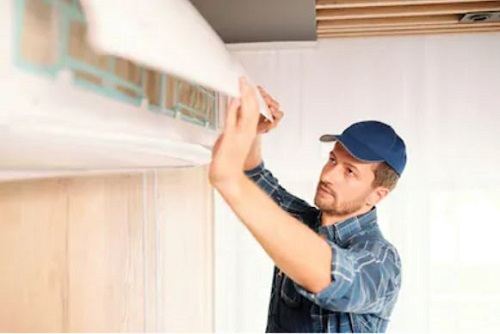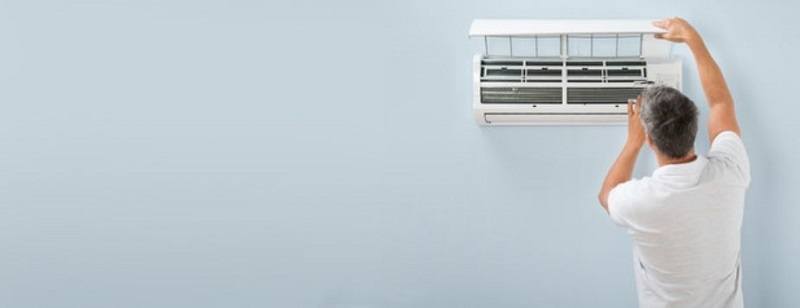When the temperature increases during the summer months, a malfunctioning or incapable portable air conditioner can be a serious concern.
Not only could you be uneasy in a humid and hot setting, but you may have to bear a higher power bill. When a portable AC unit is not working correctly, it is almost surely drawing more power to improve its inefficiency.
Unless your air conditioner has stopped functioning completely and is not a result of a connection problem or a power failure, you don’t always have to call a technician to repair it.
There are common portable Air Conditioner problems that can be detected and simply fixed without any technician’s help.
Here is a complete portable air conditioner troubleshooting guide that describes the most common problems that you will often find and how to repair them at home.Notice: When Everything Else Fails

Most of the problems that you will face with an air conditioner can be repaired easily and relatively quickly.
However, a time will come when your unit will reach the end of its life or costs too much for repairing it.
If this holds true, then you should possibly replace the appliance with a new one. Have a look at our free guide on the best portable AC unit versions. It shows you what features to consider and how to get the best one for any size area.
We also have another manual with affordable portable air conditioner reviews for those who have a tight budget.Common Portable Air Conditioner Problems and Solutions

The Portable Air Conditioner Is Not Starting
Assess the drain line and drain pan evaporator filter and coils for any discolorations.Have you switched on the portable AC unit, but it does not start?
This could be due to the lack of voltage.
If every other device or the lights in the room are working, you should examine the air conditioner’s main power outlet. Assess if the socket has power, check the cable to see if it is broken, see the circuit breaker to check if it is working properly, reset the circuit or use another outlet to see if the appliance starts.
If there’s no problem in any of these components, there’s something wrong with the air conditioner, which can be as easy as a blown internal fuse.
Consult with the manual to find out whether you have access to the fuses. If not, this job must be given to a professional as the appliance will need to be opened to replace a fuse.
Portable Air Conditioner Has Stopped Functioning
A portable air conditioner may shut down if there has been an active timer. Give it a restart again and notice if it stops again without the active timer.
Some portable AC unit models shut down when the temperature set by the user is attained, and the room is simply a notch cooler than the ambient or outside temperature.
When the temperature inside the room increases or is higher than the ambient temperature, the system will work again.
Shortage Of Airflow Coming From the Air Conditioner
Lack of airflow can be the cause of a clogged or dirty filter.
When troubleshooting this air conditioner issue, first clean the filter to eliminate any dust or dirt that’s been trapped inside it, use a brush or a vacuum.
If the filter is washable (see the manufacturer’s manual to find out), rinse it under running water and air dry it before reinstalling.
Frost’s build-up can also reduce airflow. Check for frost in the evaporator or cooling coils. Dirt in the system, frost, or any sort of obstruction will negatively effect airflow. Several portable air conditioners come with a defrost characteristic. Use this to get rid of frost.
An overheated compressor may also result in a lack of airflow. Examine the window segment of the portable AC device and the hose to see if there is adequate ventilation.
The depleting refrigerant may affect airflow. If all solutions don’t fix this problem, have a technician analysis for a refrigerant leak and if the compressor is on the fritz.
Portable AC Is Not Cooling Enough
This is another prevalent portable AC troubleshooting problem. The solution is generally not as bad as it may seem.
Similar to the previous problem mentioned, to find the problem of this portable AC not cooling adequately, see the filter and check if it is clogged or dirty. If it is, clean it.
Then, check for any air intake obstacles and eliminate them.
Examine the exhaust hose and check if there is any obstruction here. An extremely long exhaust hose might be an issue. If it is too long, then it won’t remove hot air properly. Try to make sure that this hose is as short as possible.
Check if doors or windows have been left open and ensure the fan speed is high or at its highest. At times openings or vents in windows and doors can let the cool air escape, making it feel like the portable air conditioner isn’t currently providing enough cooling.
If all those things check out, the solution, maybe one or two other things:
If seen, use a face mask and wipe all accessible spaces with a cleaner that is made especially for mold and mildew.Portable cooling units are meant and designed to cool little to medium-sized rooms. Familiar places include a bedroom, living room, basement, a lounge, or study.
Portable air conditioners are usually used for additional cooling and often used in regions where centralized air conditioners do not cool a room inside an office or home evenly.
Being compact units, portable AC units can have inadequate cooling if they are used in too large rooms or areas if there are too many people inside a room or a problem with the system.
If the device is too small for a given space and if the outside temperature is too high for the appliance, then it’ll struggle to cool the area to the desirable extent.
Make sure that you have the accurately sized appliance for the desired space. Details on how to find out follow.
Determining the Ideal Sized Unit for Space
You require to calculate the square footage of space to get the right size for an air conditioning system, unless the ceiling height is unusual, in which case you have to factor in the cubic footage or volume of the room.
To do this, measure the width and the length of the space, then multiply both numbers to obtain the square footage.
Adjusting for Ambient Temperatures
When it is hot outside, the portable air conditioner will strive to cool a room quickly or achieve low temperatures.
If this is the situation, then ambient temperature adjustment is needed.
The set temperature for a portable AC device should not be higher than ten degrees below the outside temperature. Always go for room temperature when in confusion. Ensure your rooms are well insulated. Start looking for gaps or leaks. A small opening in a window or door may cause the device to draw in warm air from other rooms and restrict its cooling capacity.
If a room gets direct sunlight, this can be a difficulty for the portable air conditioner to cool the room efficiently. The best options are installing double-glazed glass or blinds for doors and windows to prevent the room from getting too overheated.
There’s a Musty Smell In Air Conditioner

A musty smell is one of the most common portable air conditioner problems and solutions to repair.
This odor usually indicates the growth of mold or mildew.
When an air conditioner unit retains water, mold spores find it to be a perfect breeding ground. If you remove water, the odor will go away.


